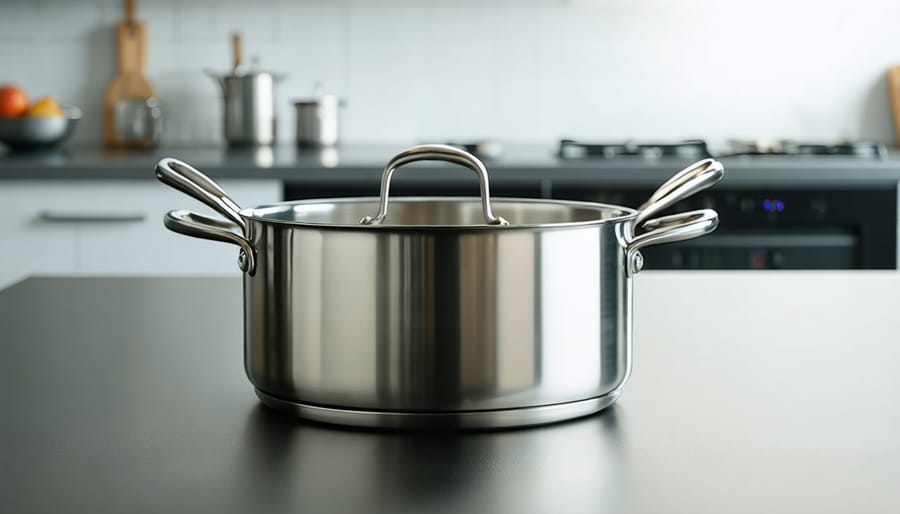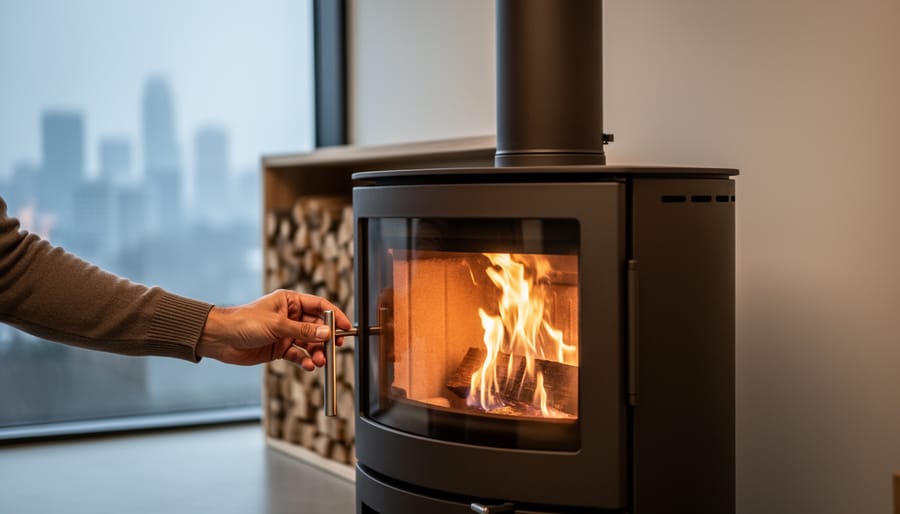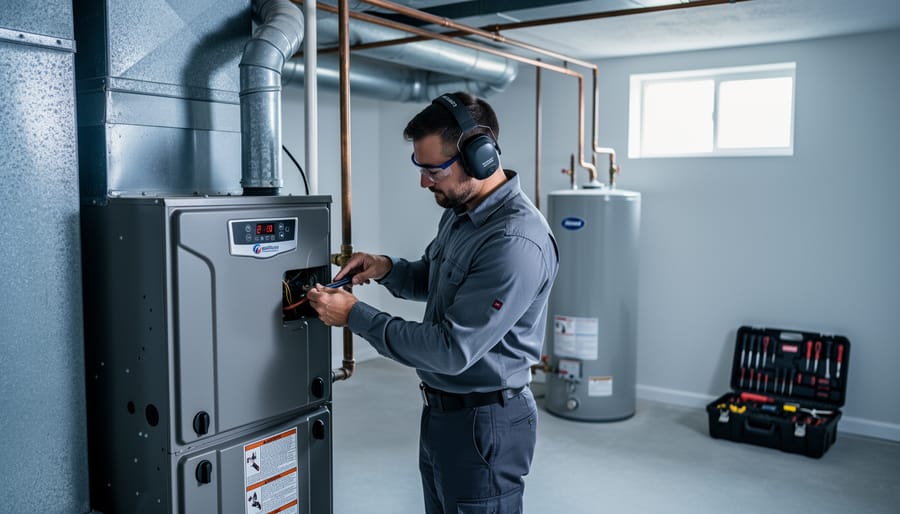Stainless steel cookware stands as one of the safest, most durable cooking options in modern kitchens, backed by decades of research and widespread use in professional environments. While concerns about nickel and chromium leaching occasionally surface, high-quality stainless steel pots and pans pose minimal health risks when properly maintained and used. The key lies in understanding the composition of your cookware – typically marked as 18/10 or 18/8 stainless steel – which indicates the percentage of chromium and nickel used to create a stable, non-reactive cooking surface.
The popularity of stainless steel cookware stems from its remarkable resistance to corrosion, exceptional durability, and ability to withstand high temperatures without degrading or releasing harmful chemicals. Unlike some other cookware materials, properly manufactured stainless steel doesn’t contain toxic coatings or potentially dangerous compounds that could contaminate your food. This introduction to stainless steel cookware safety explores the essential facts you need to know to make informed decisions about your kitchen equipment while ensuring your family’s health and safety.
Understanding Stainless Steel Composition
Grade and Quality Indicators
High-quality stainless steel cookware typically features a series of numbers that indicate its composition, such as 18/10, 18/8, or 18/0. The first number represents the percentage of chromium, while the second indicates the percentage of nickel. For example, 18/10 stainless steel contains 18% chromium and 10% nickel, making it highly resistant to corrosion and ideal for cookware.
The highest grade commonly used in cookware is 18/10, which offers excellent durability and a lustrous finish that resists scratching and maintains its appearance over time. The 18/8 grade is also considered high-quality, with similar properties but slightly less nickel content. Meanwhile, 18/0 contains no nickel and is more affordable but may be more susceptible to corrosion.
When shopping for stainless steel cookware, look for pieces that feel substantial and well-balanced. Quality indicators include tight-fitting lids, securely attached handles, and smooth, even surfaces without visible seams. The best cookware often features a multi-layer construction with an aluminum or copper core for superior heat distribution. This construction is typically visible as a sandwich-like layer on the bottom or extending up the sides of the pot or pan.
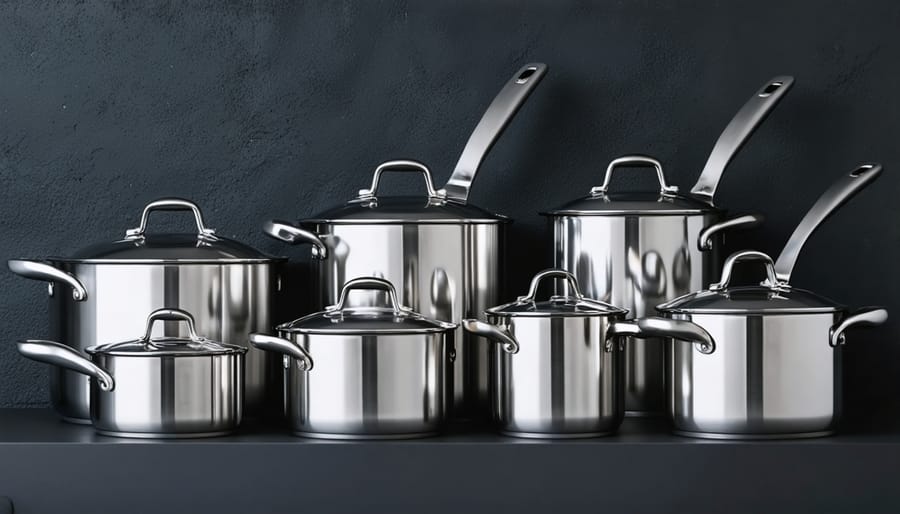
Common Metals in Stainless Steel Alloys
Stainless steel cookware gets its corrosion resistance and durability from a careful blend of metals, with chromium and nickel being the most significant components. Chromium, typically present at 18%, forms a protective oxide layer that prevents rusting and gives the cookware its “stainless” properties. This layer naturally renews itself when scratched, ensuring long-lasting protection.
Nickel, usually around 8-10% in most cookware, enhances corrosion resistance and adds a bright, silvery finish. However, some people may be sensitive to nickel, which has led to the development of nickel-free options. These alternatives often use higher levels of chromium or incorporate other metals like molybdenum to maintain durability.
Other common metals in stainless steel cookware include carbon (less than 0.8%), which provides strength, and manganese, which improves heat distribution. Some premium cookware may also contain small amounts of copper or aluminum in their base layers to enhance heat conductivity, making them more efficient for cooking while maintaining the safety benefits of a stainless steel cooking surface.
Safety Concerns and Scientific Evidence
Leaching: Fact vs. Fiction
Let’s address a common concern about stainless steel cookware: metal leaching during cooking. While some worry about metals transferring into food, scientific research shows that properly manufactured stainless steel cookware is remarkably stable and safe for everyday cooking.
Studies indicate that metal leaching from quality stainless steel cookware occurs at such minimal levels that it poses no health risk during normal cooking. However, certain factors can influence leaching rates. Cooking highly acidic foods for extended periods, using abrasive cleaning methods, or damaged cookware surfaces may increase metal transfer.
Here are the facts: New stainless steel cookware may release trace amounts of metals during initial uses, but this decreases significantly with regular use. The amount of nickel or chromium that might leach is well below safety thresholds established by health organizations. Even for individuals with metal sensitivities, modern high-grade stainless steel cookware presents minimal risk when properly maintained.
To minimize any potential leaching:
– Season new cookware before first use
– Avoid cooking highly acidic foods for extended periods
– Use wooden or silicone utensils instead of metal
– Don’t store food in the cookware for long periods
– Replace severely scratched or damaged pieces
Remember, quality stainless steel cookware from reputable manufacturers undergoes rigorous testing to ensure it meets safety standards for food contact materials.
Heat Resistance and Stability
Stainless steel cookware stands out for its exceptional heat resistance and stability across various cooking methods. Whether you’re searing steaks at high temperatures or simmering delicate sauces, quality stainless steel maintains its structural integrity without warping or releasing harmful substances. This durability makes it an excellent choice for cookware compatibility with different stoves, from traditional gas ranges to modern induction cooktops.
One of the most impressive features of stainless steel is its ability to withstand temperatures up to 800°F (427°C) without degrading. This high heat tolerance ensures safe cooking across a wide range of temperatures, making it perfect for everything from gentle braising to high-heat searing. Unlike some other materials, stainless steel won’t release toxic fumes or change its composition when exposed to high temperatures.
The material’s stability also means it won’t react with acidic foods like tomatoes or citrus, maintaining both the safety and flavor of your dishes. This non-reactive nature, combined with its excellent heat distribution properties, makes stainless steel cookware a reliable choice for both home cooks and professional chefs. For best results, always preheat your pan gradually and avoid sudden temperature changes, which helps maintain the cookware’s longevity and optimal performance.
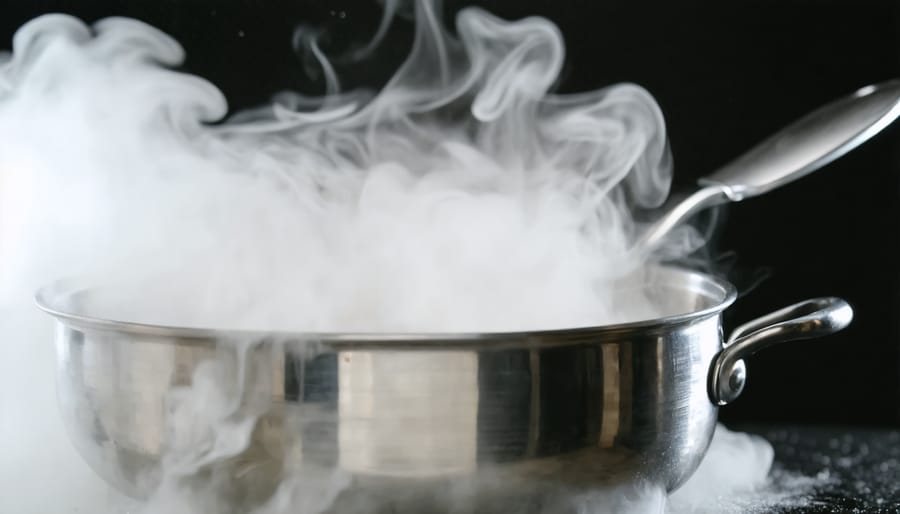
Safe Usage and Maintenance
Proper Seasoning and Care
Proper seasoning and maintenance of your stainless steel cookware not only extends its lifespan but also ensures safer cooking experiences. Before first use, wash your new cookware thoroughly with warm, soapy water to remove any manufacturing residues. While stainless steel doesn’t require seasoning like cast iron, creating a protective layer can enhance its non-stick properties and handle heat safety.
To season your stainless steel cookware, start by heating it over medium heat until warm. Add a thin layer of high-smoke-point oil (such as avocado or grapeseed oil) and swirl it around to coat the cooking surface evenly. Let the oil heat until it starts to smoke slightly, then remove from heat and allow it to cool completely. Wipe away excess oil with a paper towel.
For daily care, always let your pan cool before cleaning to prevent warping. Use warm water and mild dish soap, avoiding abrasive cleaners that can scratch the surface. For stubborn food residue, soak the pan in warm water for 15-30 minutes before cleaning. To maintain the cookware’s pristine condition, dry it thoroughly after washing to prevent water spots and potential corrosion.
Never use metal utensils that can scratch the surface, opt for wooden or silicone alternatives instead. If you notice rainbow discoloration or white spots, these can be removed safely using white vinegar or a specialized stainless steel cleaner. Regular maintenance using these guidelines will keep your cookware performing safely and efficiently for years to come.
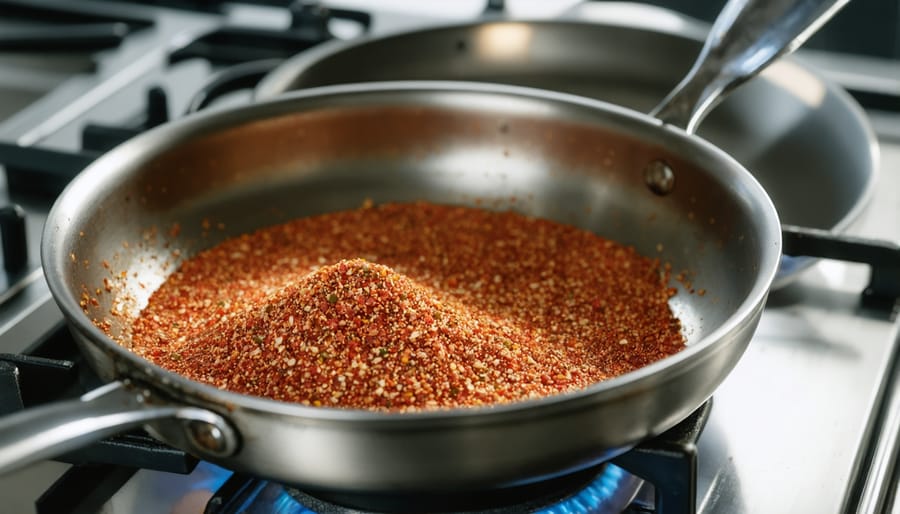
When to Replace Your Cookware
Even the highest quality stainless steel cookware will eventually show signs of wear, and knowing when to replace your pieces is crucial for both safety and optimal cooking performance. Watch for these key indicators that suggest it’s time for replacement:
Deep scratches or gouges in the cooking surface are more than cosmetic concerns – they can harbor bacteria and potentially release metal particles into your food. If you notice significant scratching that you can feel with your fingernail, consider replacing the piece.
Warping is another serious issue that requires attention. A pan that doesn’t sit flat on your cooktop won’t heat evenly and could be unsafe to use. Test your cookware by placing it on a flat surface – if it rocks or spins, it’s time for a replacement.
Pay close attention to the handles and attachments. Loose or wobbly handles can lead to dangerous spills and burns. While some handles can be tightened, those with damaged welds or severe loosening should prompt immediate replacement.
Discoloration alone isn’t usually a safety concern, but pitting (small holes in the surface) indicates chemical damage that can compromise your cookware’s integrity. If you notice pitting, especially in combination with rainbow-like staining, it’s best to replace the item.
The core or bottom layer becoming exposed is another clear sign for replacement. In multi-ply cookware, if you can see different metal layers or notice flaking, the piece has reached the end of its safe life.
Remember that proper care and maintenance can significantly extend your cookware’s lifespan, but when these safety issues arise, it’s better to err on the side of caution and invest in new pieces.
Alternative Options and Recommendations
While stainless steel cookware is a popular choice, exploring safe cookware alternatives can help you make an informed decision based on your specific cooking needs. Let’s look at some popular options:
Cast iron cookware offers excellent heat retention and naturally non-stick properties when properly seasoned. It’s incredibly durable and can last generations with proper care. However, it requires regular maintenance and can be quite heavy.
Ceramic-coated cookware provides a non-toxic cooking surface and excellent non-stick properties. When it comes to ceramic cookware durability, while it may not last as long as stainless steel, it’s an excellent choice for those prioritizing chemical-free cooking.
Glass cookware is completely inert and won’t leach any substances into your food. It’s perfect for baking and storing leftovers but may not be suitable for high-heat stovetop cooking.
Here are our recommendations based on specific cooking needs:
For everyday cooking: A combination of stainless steel and cast iron pieces provides versatility and durability.
For health-conscious cooking: Ceramic-coated or glass cookware offers peace of mind regarding chemical leaching.
For professional-style cooking: High-quality stainless steel with an aluminum or copper core ensures excellent heat distribution and control.
For busy families: Stainless steel remains the most practical choice, offering durability and easy maintenance.
For specific cooking techniques:
– High-heat searing: Cast iron or carbon steel
– Acidic foods: Stainless steel or ceramic-coated
– Slow cooking: Enameled cast iron
– Quick meals: Non-stick ceramic coating
Remember that no single material is perfect for every cooking situation. Consider building a diverse collection of cookware that suits your cooking style and health preferences.
Stainless steel cookware remains one of the safest and most reliable options for home cooking when properly maintained and used. Throughout this guide, we’ve explored how high-quality stainless steel cookware is non-reactive, durable, and free from harmful chemicals like PFOA and PTFE. The key to maximizing safety lies in following proper usage and care guidelines: maintaining appropriate cooking temperatures, using suitable utensils, and cleaning your cookware correctly.
For optimal safety and longevity, remember to season your stainless steel pans regularly, avoid sudden temperature changes, and always check for signs of damage or wear. While no cookware is entirely perfect, stainless steel offers an excellent balance of safety, durability, and cooking performance.
We recommend investing in high-quality 18/10 stainless steel cookware from reputable manufacturers and following the care instructions provided. With proper maintenance, your stainless steel cookware can provide years of safe, healthy cooking for you and your family. Regular inspection and replacement of damaged pieces will ensure continued safe use of your cookware collection.

